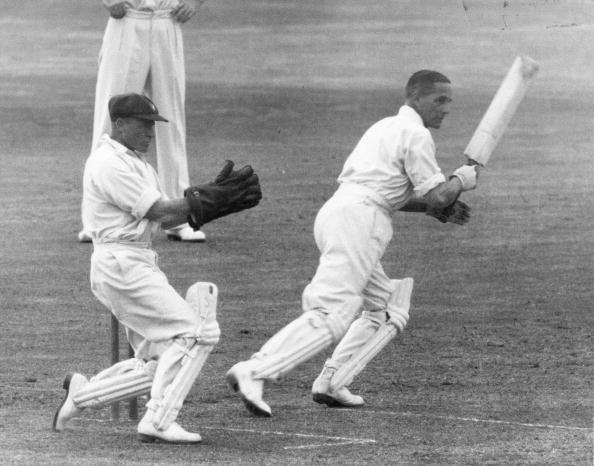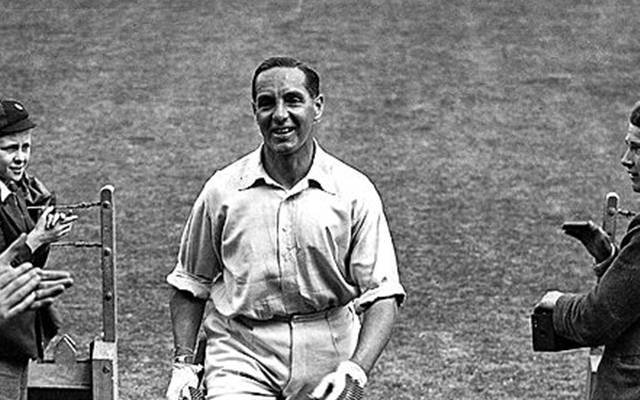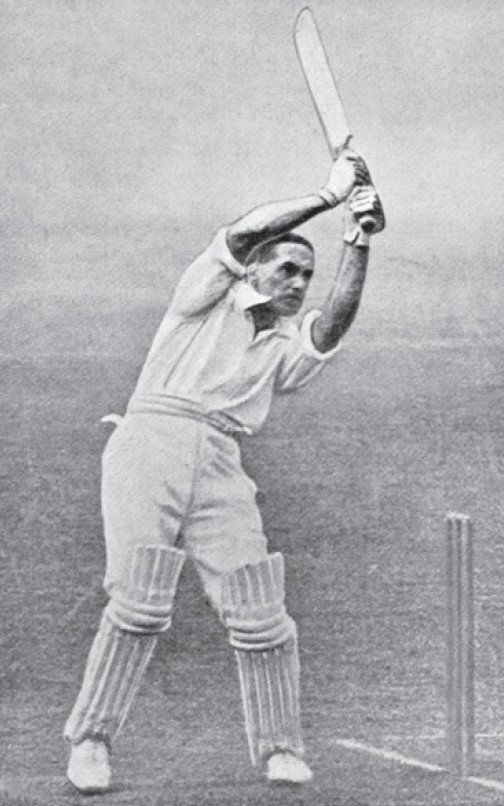Herbert Sutcliffe was one of England’s toughest cricketers. He said he wasn’t as good as Jack Hobbs, with whom he formed a famous Test match opening partnership, Wally Hammond or Len Hutton.
But he had amazing powers of concentration and tenacity and averaged more in Tests than any of them. And indeed, more in Ashes Tests than anyone bar Don Bradman. Bradman’s opinion was that Sutcliffe had the best temperament of any cricketer he played with or against.
The hundred he scored in the fourth innings on a rain-affected wicket at Melbourne in 1929 took England to within sight of the finishing line in what remains their highest successful run-chase. He must rank among the greatest ever scored. That performance typified Sutcliffe.
He did not mind how uncomfortable he might look. Or how many blows he might take to the body (and on that occasion balls were kicking up around his head) if he survived. He was courageous, unflappable, and expert at leaving balls that did not need to be played. Therefore, all good qualities in an opener, and qualities that earned him his place in the distinguished line of outstanding Yorkshire.
And as England openers that also included Len Hutton and Geoffrey Boycott. Sutcliffe played a big role in mentoring Hutton, who like Sutcliffe played his early cricket around Pudsey. He was as reliable a Test match opener as there has been.
He was only dismissed without scoring twice and no regular opener for any country has ever averaged more than Sutcliffe’s 61.10 going in first for England. In Hobbs, he found the ideal partner. Their productivity in what in modern terms was quite a short period was remarkable.
In 39 opening stands between 1924 and 1930, when Hobbs retired from Test cricket, they scored 3,339 runs together, included in which were 15-century partnerships. Perhaps their most famous stand together came in the final Test in 1926 with the Ashes at stake, when they both scored masterly centuries on another pitch, made difficult by rain.
England eventually ran out of decisive winners. Despite the proliferation of Test cricket since, only one opening pair. The West Indians great Desmond Haynes and Gordon Greenidge – have posted more three-figure starts. Herbert Sutcliffe also formed another special relationship with Percy Holmes in Yorkshire.
They shared 69 century stands for the first wicket, including what for many years was a world record 555 against Essex at Leyton in 1932. Sutcliffe’s technique was not flawless. He was reckoned to play with an open face and spinners thought they could have him caught close in on the offside.
Bill O’Reilly and Clarrie Grimmett had some success against him. But he still averaged at least 50 in every series he played against Australia. He was not afraid to hook fast bowling. Keep in mind there were no helmets in those days, – and although he tended to hit the ball in the air when he did so. It was a shot that served him well.
It was about the only risk he indulged in. He was generally a superb player of the fastest bowling. At his peak between the years of 1927 to 1933, in six English seasons and two tours of Australia and one of South Africa. Sutcliffe scored almost 20,000 runs at an average of 66.72.
These were days of good batting pitches and high scoring, but even so, Sutcliffe stood out among his English peers. He relished the biggest challenges and Test matches against Australia, and Yorkshire’s battles with Lancashire. Which were then great occasions, almost always saw him at his best.
Yorkshire and Lancashire were the dominant counties of the period. Yorkshire won 12 championships and Lancashire five in the 21 seasons between 1919 and 1939 that formed Sutcliffe’s career. The First World War delayed his entry into county cricket until he was 24 years old.
But he had played some cricket during the war while serving in the military and made an immediate impact with Yorkshire’s first team. He was scoring what remains a record 1,839 runs for someone in their debut season. Although his next two seasons proved quite fallow.
Herbert Sutcliffe began to tighten up his game and in 1922 topped 2,000 for the first of what turned out to be 14 straight seasons. He was in his 30th year when he made his Test debut against South Africa in 1924. In the first outing, he was scoring 64 in his first match, 122 in his second, and 83, and 29 not out in his third.

In the following winter, he made his first tour and found Australian pitches and the format of Test matches played to a finish, to his liking. Australia won the series 4–1 but Sutcliffe was unperturbed, occupying the crease for more than 30 hours, and 712 runs in the first four matches before exhaustion appeared to take its toll in the final contest.
He scored 59 and 115 in the opening Test in Sydney, which lasted seven days, before moving on to Melbourne for the second game, which started five days later and itself lasted seven days. There he batted 13½ hours, scoring 176 in the first innings – batting right through the third day in a stand of 283 with Hobbs – and 127 in the second.
In all first-class cricket, Sutcliffe scored 50,135 runs (placing him seventh on the all-time list) and 149 centuries (which puts him sixth), and his Test average of 60.73 is the highest among all Englishmen, with only Don Bradman (99.94), Graeme Pollock (60.97) and George Headley (60.83) standing ahead of him. His stature went beyond mere figures though.
Herbert Sutcliffe took immense pride in his appearance, and was always immaculately turned out, and was offered – but declined – the position of Yorkshire’s first modern professional captain. In retirement he became a successful businessman, developing a sports outfitting company.

